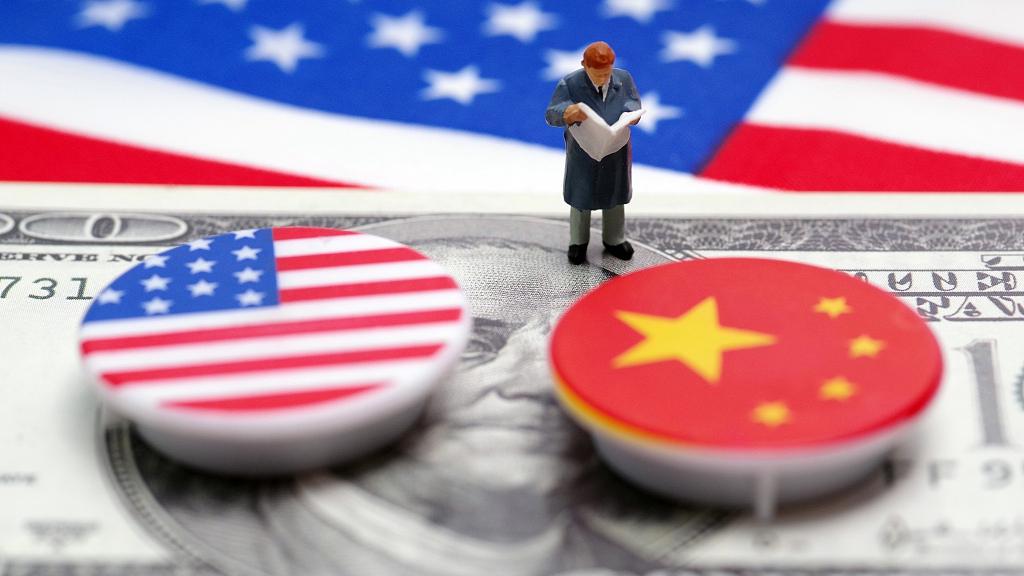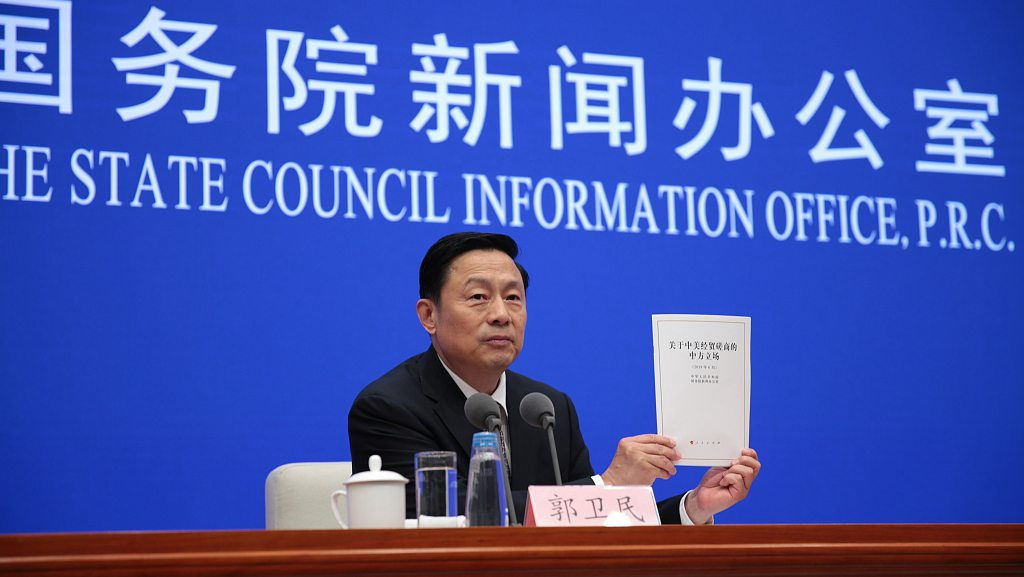
Analysis
15:25, 02-Jun-2019
Why the U.S. is blowing hot and cold on China-U.S. trade talks?
Updated
20:13, 02-Jun-2019
CGTN

China has never denied that there were trade issues that needed to be sorted out between China and the U.S. But it has also insisted that the trade frictions between the world's largest economies should be solved via negotiations and talks, not threats and pressure.
It can be tough and time-consuming in arriving at a common understanding of certain trade issues, but it is easy to break one's promise and make all the previous work futile in one minute. And it seems that America's changing mood has been the main culprit of the breaking down of the trade talks.
The first time: A unilateral move
As early as February 2018, the U.S. government has proposed that China send a high-level delegation to Washington for trade negotiations. China has made great efforts in preparation work and has had several rounds of talks with the U.S. on the trade balance. Both sides reached a primary consensus that China would buy more agricultural and energy products from the U.S.
However, on March 22, 2018, the U.S. government released the 301 investigation report, which made untrue accusations against China on intellectual property rights and technology transfer. It then announced that it would impose 25 percent tariffs on 500 million U.S. dollars' worth of Chinese goods.

The State Council Information Office (SCIO) holds a press conference on Sunday and issues a white paper to provide a comprehensive picture of the China-U.S. economic and trade consultations and present China's policy position on these consultations. /CGTN Photo
The State Council Information Office (SCIO) holds a press conference on Sunday and issues a white paper to provide a comprehensive picture of the China-U.S. economic and trade consultations and present China's policy position on these consultations. /CGTN Photo
The second time: Unexpected but within expectation
For the benefits of both countries, China again sent a delegation to resume trade talks with the U.S.
On May 19, 2018, China and the U.S. issued a joint statement vowing not to launch a trade war and agreed to maintain high-level communications to resolve trade issues. In just ten days, however, the U.S. went back on its words and announced that it would move ahead with its tariff plan. China had no choice but to retaliate.
The third time: A hegemonic approach
On the sidelines of G20 summit in Argentina on December 1, 2018, Chinese President Xi Jinping and U.S. President Donald Trump agreed on a trade war truce and vowed to come to a trade agreement in the next 90 days. Six rounds of trade talks have been held since between Beijing and Washington, and both sides are on the same page over most of the trade issues.
Nevertheless, the U.S. side has taken an unhelpful hegemonic approach to solve the remaining issues. It has insisted on not canceling the tariffs and adding clauses that violate China's sovereignty. On May 6, in an irresponsible move, the U.S. accused China of reneging on previous agreements trying to lay the blame on China. It then announced that the 10 percent tariff rate on 200 billion U.S. dollars' worth of Chinese goods would be increased to 25 percent and threatened to impose tariffs on all the remaining imported goods from China.
So who is really to blame for prolonging the trade stand-off? Perhaps the answer is self-evident now.
(If you want to contribute and have specific expertise, please contact us at opinions@cgtn.com.)

SITEMAP
Copyright © 2018 CGTN. Beijing ICP prepared NO.16065310-3
Copyright © 2018 CGTN. Beijing ICP prepared NO.16065310-3